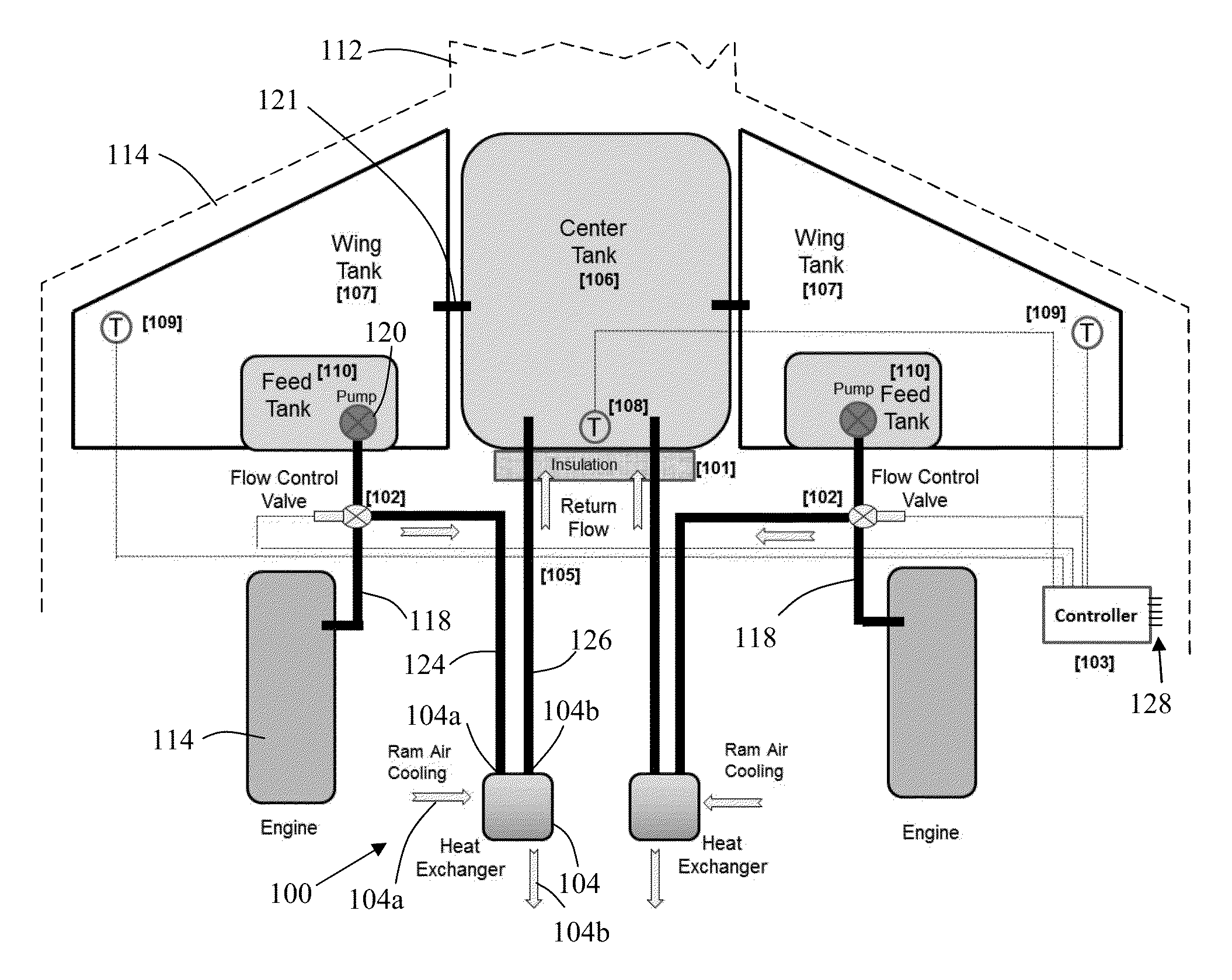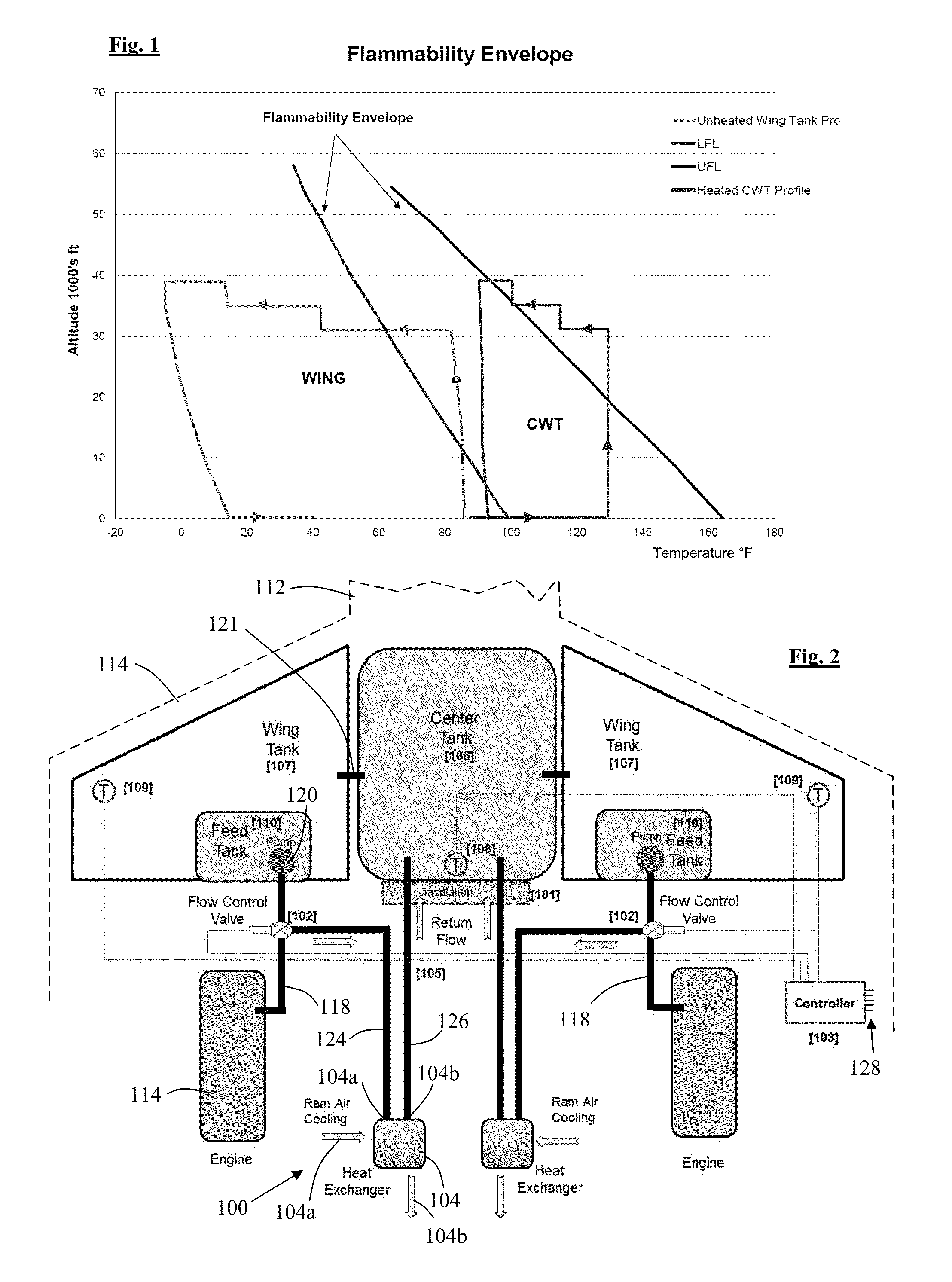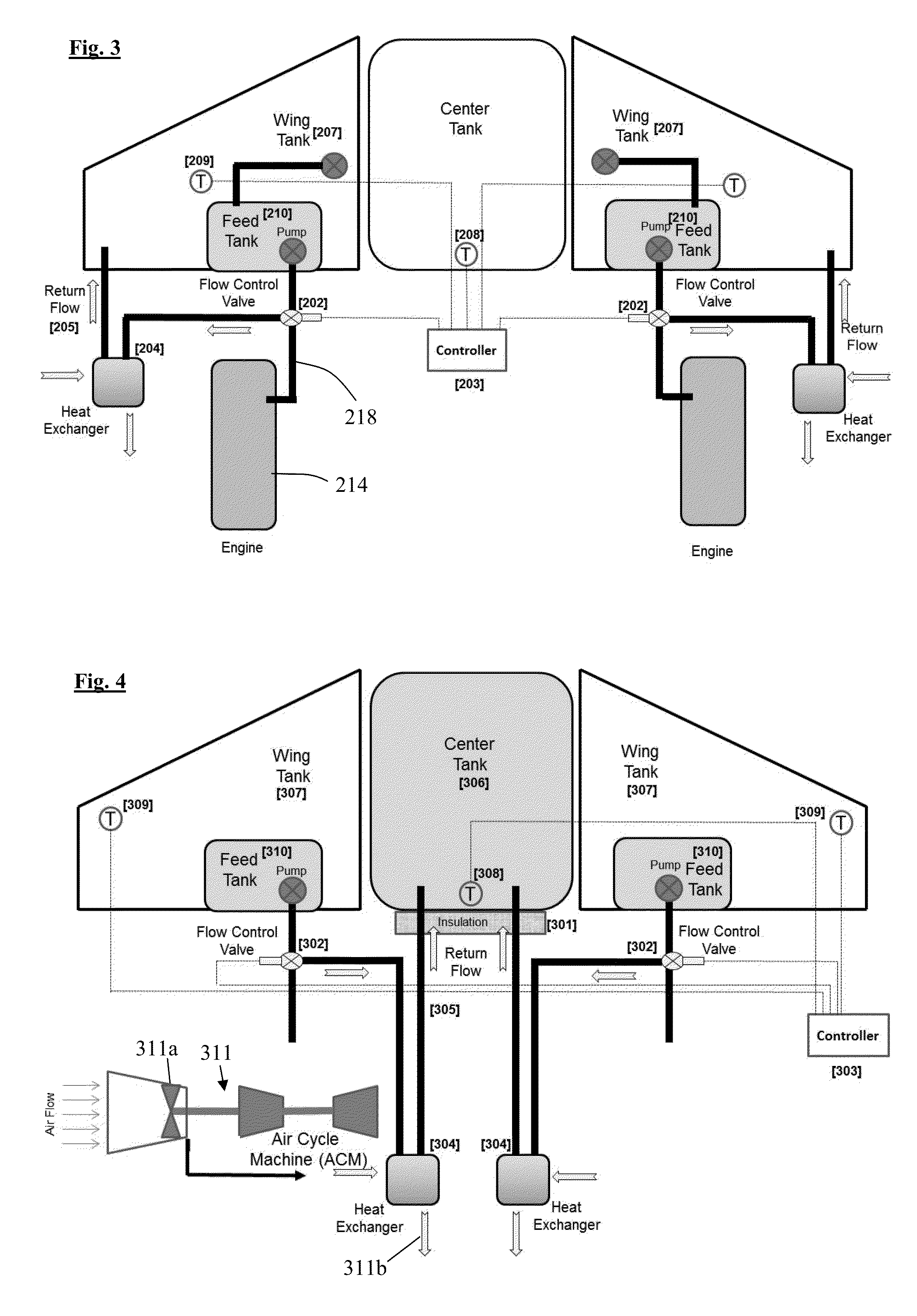Aircraft fuel systems
a fuel system and aircraft technology, applied in the direction of power plant fuel tanks, transportation and packaging, conditioning fuel arrangements, etc., can solve the problems of difficult monitoring of their effectiveness, cost-effective operation over their life cycle, energy loss to the compressed air supply, etc., and achieve the effect of reducing flammability
- Summary
- Abstract
- Description
- Claims
- Application Information
AI Technical Summary
Benefits of technology
Problems solved by technology
Method used
Image
Examples
first embodiment
[0061]Referring to FIG. 2 according to the invention, fuel in an aircraft fuel system comprises a centre tank 106 located in the centre of the fuselage 112 of the aircraft and two wing tanks 107 each located in one of the wings 114 of the aircraft. A fuel feed tank 110 is located in each of the wing tanks 107, and each of two engines 116 is connected to a respective one of the fuel feed tanks 110 by a respective fuel feed pipe 118, and a pump 120 is provided in each of the fuel feed pipes 118 to pump fuel from the fuel feed tanks to the engines 116. Pipes 121 are provided interconnecting the tanks 106, 107, 110 of the fuel storage system in conventional manner to allow fuel to flow between them, using a conventional fuel transfer system not shown in the illustration.
[0062]A fuel cooling circuit 100 is provided on each side of the aircraft to cool the fuel in the storage system, in this case in the centre tank 106. Each cooling circuit comprises a heat exchanger 104 having an inlet 1...
third embodiment
[0066]Referring to FIG. 4, a fuel system according to the present invention comprises an embodiment of the invention where fuel in an aircraft fuel tank is cooled to reduce its temperature below the flammability limit for the fuel being used, using cooling air flow from the aircraft air cycle machine inlet. Again, features of FIG. 4 corresponding to those of FIG. 2 are indicated by the same reference numerals increased by 200. Heat flow from high temperature bays which are adjacent to the fuel tank is minimized by use of insulation 301, in order to minimize the fuel cooling requirements of the present invention. Fuel flow is diverted from a tee in the fuel engine feed flow supply via a flow control valve 302, which allows the diverted fuel flow to be on or off. Control of the diverter valve is by means of a system controller 303. When valve 302 is commanded open, fuel flows to both the engine and the cooling loop of the present invention. When valve 302 is commanded closed, fuel con...
fourth embodiment
[0067]the present invention will now be described with reference to FIG. 5, and comprises an embodiment of the invention where fuel in an aircraft fuel tank is cooled to reduce its temperature below the flammability limit for the fuel being used, using cold air from the aircraft Environmental Control System (ECS) 411. The ECS is arranged to condition air that is circulated to the passenger area of the aircraft and therefore air within it is typically significantly cooler than the target temperature of the fuel tanks. Again, features of FIG. 5 corresponding to those of FIG. 2 are indicated by the same reference numerals increased by 300. Heat flow from high temperature bays which are adjacent to the fuel tank is minimized by use of insulation 401, in order to minimize the fuel cooling requirements of the present invention. Fuel flow is diverted from a tee in the fuel engine feed flow supply via a flow control valve 402, which allows the diverted fuel flow to be on or off. Control of ...
PUM
 Login to View More
Login to View More Abstract
Description
Claims
Application Information
 Login to View More
Login to View More - R&D
- Intellectual Property
- Life Sciences
- Materials
- Tech Scout
- Unparalleled Data Quality
- Higher Quality Content
- 60% Fewer Hallucinations
Browse by: Latest US Patents, China's latest patents, Technical Efficacy Thesaurus, Application Domain, Technology Topic, Popular Technical Reports.
© 2025 PatSnap. All rights reserved.Legal|Privacy policy|Modern Slavery Act Transparency Statement|Sitemap|About US| Contact US: help@patsnap.com



